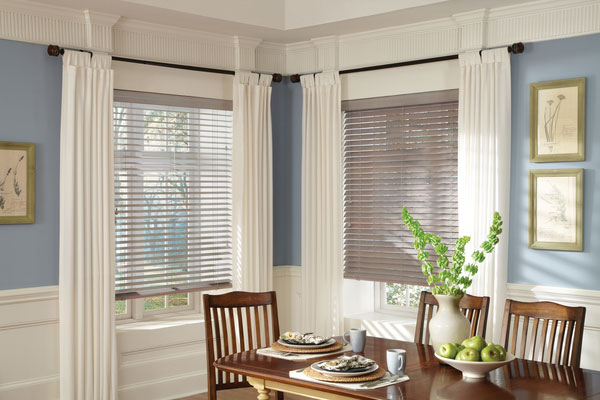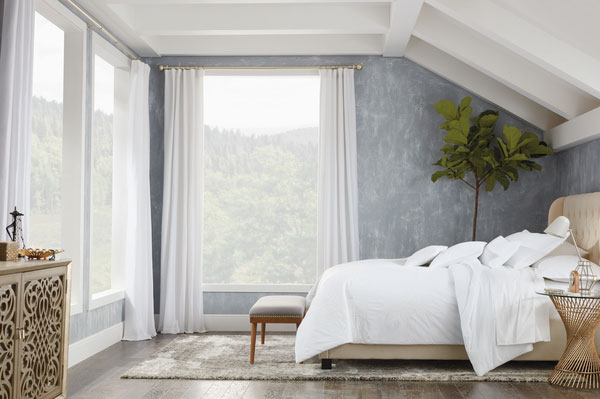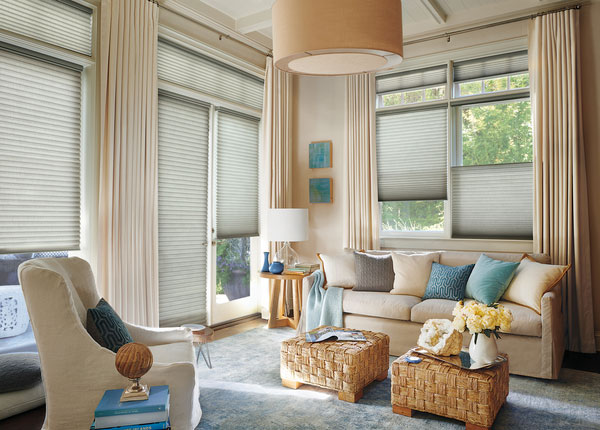Fabric treatments are to a room what fine jewelry is to a luxury gown. Without window treatments, a room can look well-organized and beautifully arranged, yet still incomplete. If curtains or draperies are poorly designed, they can distract from the rest of the room like cheap costume jewelry. But when fabric treatments are carefully arranged and custom-designed, the look is unmistakably stylish and complete. Here are some of the considerations design experts at Strickland’s Home recommend in order to ensure your fabric treatments look like the ones you see in shelter magazines.
- Drapery hardware and measurements: Drapery hardware considerations are a must. End brackets are, of course, necessary for mounting curtain rods, but heavier draperies may also require center brackets. Double brackets allow for layering. For instance, you could combine opaque or light-filtering fabrics with sheers. Then, there are rings and hooks, the finish and color, as well as the finial design, or the ornamental decor at the end of each curtain rod. Measurements on how far you want the bracket to project the curtains away from the wall, or, where to place a rod above the window, can drastically impact the aesthetic quality of your fabric treatments. You don’t want draperies to suffocate the window or bunch too closely; they should frame the window, not overwhelm it. This is where a free on-site consultation with Strickland’s can make all the difference.
- The material: Of course, there are multiple considerations to make in terms of fabric selection, for aesthetic reasons as well as upkeep and longevity. In terms of material, cotton and linen fabrics are excellent choices, whereas wool does not do well in hot and humid climates like Topsail Island or Wrightsville Beach. Rich silk curtains are gorgeous, but they must be lined and interlined. Synthetics are long-lasting, but may require more attention to design – you don’t want them to look synthetic. Depending on fabric choice, draperies can look chic and sophisticated (like these in a Parisian home library which glow an eye-catching luminous gold), or pretty and playful (like these patterned curtains perfectly suited to a country house).
- The measurements: Fabrics must be carefully measured depending on ceiling height. Do you want the drapes to break before the floor or do you like a pooling effect? These monochromatic curtains in an Upper East Side home reach for the ceiling and cascade down to the floor. How wide or narrow do you want pleats and folds? Do you want well-defined pleats or effortlessly soft folds? What about the headers, or the tops of the drapes? These soft blue window curtains in creative director Aerin Lauder Zinterhofer’s dressing room have the perfect amount of pleats to frame this window.
- The lining: Then, of course, there are important considerations to make with respect to fabric lining, which affects insulation, light-filtering, and color. With bright and sweltering hot summers on the North Carolina coast, these decisions can make all the difference in terms of efficiency and energy savings.



In short, the fabric treatments you see in the best of shelter magazines require immense attention to technical and artistic detail. At Strickland’s Home, our team of experts are happy to guide you every step of the way in designing your own custom fabric treatments. Request an appointment or come by our showroom to get started on your designer window treatments today.